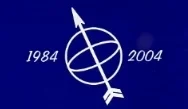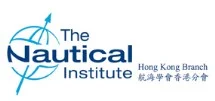Apr90
archive > Log > Log1990
Hong Kong

Electronic charts

PROFESSOR JENS FROESE, FNI, spoke on the subject of electronic charts and data informations systems. He started by outlining the total concept of data displays on ships and only came on to the specific subject of electronic charts later in the meeting. He stated that the use of these systems on ships would possibly enable one officer to man the bridge throughout, the engine monitoring and alarm system being incorporated such that important alarms are relayed to the ship's operation officer on his data display panel but in such a way that the safe navigation of the ship is not affected.
We were surprised to learn that the driving force behind the introduction of electronic charts was not the replacement of paper charts but primarily as a means to update the chart information by electronic means. Jens gave examples of electronic charts in other areas, In particular, he mentioned the German car rental company, Interent, whose cars incorporate the Travelpilot system which is essentially an electronic chart.
One of the major hurdles to overcome is the standardisation of data formats. He told us that at present Germany and Canada are jointly putting forward a proposal to the IHO and IMO and it was hoped agreement would be reached soon..
The proposed concept also included symbols for use on the electronic charts. These have a triangle for the ship's position and green and red squares for port and starboard buoys, respectively. He went on to mention that the most important button for the display was the reset button which reverted to the last display and that display scale was derived from radar display scales so that side by side radar and EC displays showed exactly the same scaled picture for fast and safe comparisons.
There are several systems on the market and they use a combination of position sensors, it is being proposed that only one system be used to derive vessel's position and that an alternative source also be available and displayed as a shadowed cursor on the display. Ultimately the system should be integrated to such an extent that, if the cursor is placed over a navigation mark, then text is retrieved from a data base to display the characteristics of that navigation mark.
Jens then gave us a glimpse into the future of ECDIS, saying that the following might be incorporated: motion displays using gyro and Doppler sensors to provide such information as ship's position in three minutes while berthing at slow speed; ship's motions such as yawing, pitching, rolling, etc., to allow control of effectiveness on propulsion (however, he stated that at present it was easier and cheaper to look through the bridge window); echo sounding, with a look ahead system coupled to an alarm; engine management, such as to allow adjustment of speed to meet eta requirements and alarms for one hour to pilot, call master, call cook, etc.
Contributed by P. R. Owen, FNI
Seaways April 1990

